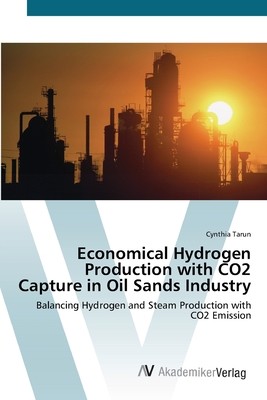
- We will send in 10–14 business days.
- Author: Cynthia Tarun
- Publisher: AV Akademikerverlag
- ISBN-10: 3639431685
- ISBN-13: 9783639431681
- Format: 15.2 x 22.9 x 0.8 cm, softcover
- Language: English
- SAVE -10% with code: EXTRA
Economical Hydrogen Production with CO2 Capture in Oil Sands Industry (e-book) (used book) | bookbook.eu
Reviews
Description
Revision with unchanged content. As reserves of conventional crude oil are depleted, there is a growing need to develop unconventional oils such as heavy oil and bitumen from oil sands. In terms of recoverable oil, Canadian oil sands are considered to be the second largest oil reserves in the world. However, the upgrading of bitumen from oil sands to synthetic crude oil (SCO) requires nearly ten times more hydrogen (H2) than the conventional crude oils. The current H2 demand for oil sands operations is met mostly by steam reforming of natural gas. With the future expansion of oil sands operations, the demand of H2 for oil sand operations is likely to quadruple in the next decade. As natural gas reforming involves significant carbon dioxide (CO2) emissions, this sector is likely to contribute largely to the increase of CO2 emissions. With the current concern in global warming in which CO2 is a major concern, it is imperative to look at the pro-duction of H2 in a CO2 constrained world. This book presents a process that minimizes CO2 emission and captures CO2 at minimum energy penalty in typical H2 plants. The results will be useful for hydrogen production plants using steam methane reforming taking into account mitigating CO2 emissions.
EXTRA 10 % discount with code: EXTRA
The promotion ends in 20d.03:26:30
The discount code is valid when purchasing from 10 €. Discounts do not stack.
- Author: Cynthia Tarun
- Publisher: AV Akademikerverlag
- ISBN-10: 3639431685
- ISBN-13: 9783639431681
- Format: 15.2 x 22.9 x 0.8 cm, softcover
- Language: English English
Revision with unchanged content. As reserves of conventional crude oil are depleted, there is a growing need to develop unconventional oils such as heavy oil and bitumen from oil sands. In terms of recoverable oil, Canadian oil sands are considered to be the second largest oil reserves in the world. However, the upgrading of bitumen from oil sands to synthetic crude oil (SCO) requires nearly ten times more hydrogen (H2) than the conventional crude oils. The current H2 demand for oil sands operations is met mostly by steam reforming of natural gas. With the future expansion of oil sands operations, the demand of H2 for oil sand operations is likely to quadruple in the next decade. As natural gas reforming involves significant carbon dioxide (CO2) emissions, this sector is likely to contribute largely to the increase of CO2 emissions. With the current concern in global warming in which CO2 is a major concern, it is imperative to look at the pro-duction of H2 in a CO2 constrained world. This book presents a process that minimizes CO2 emission and captures CO2 at minimum energy penalty in typical H2 plants. The results will be useful for hydrogen production plants using steam methane reforming taking into account mitigating CO2 emissions.


Reviews